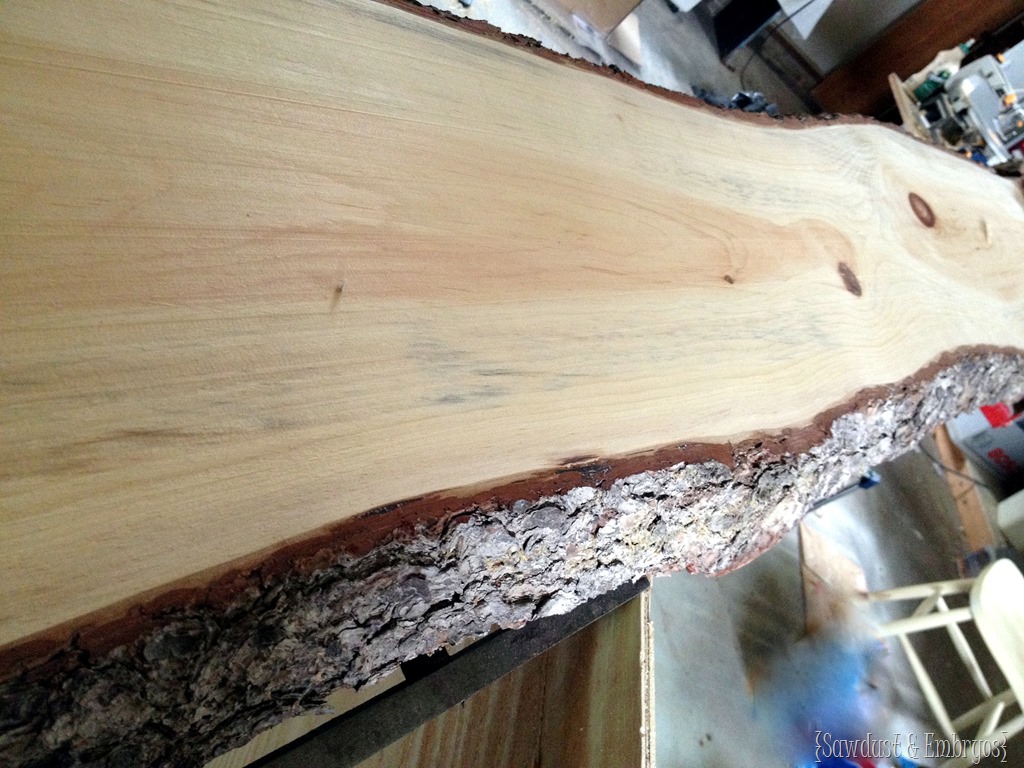
If you’re wood has little powerdery holes, there’s a good chance it’s a powderpost beetle. Soft spots can often appear in wood in areas of rot or where there are bug trails. Rip cuts with the grain of the slab relieve tension and decrease the probability of your slab warping. This also makes the wood more structurally sound than buying a large slab for your top, which is why it’s often preferred. Bookmatching is a great tactic for making a live edge table with any size and shape. You can also use multiple slabs on your top, which is known as a bookmatch. This can help to alleviate many of the common issues. Screws can typically be used for very small pieces, but you will likely run into issues if you use screws to mount larger tabletops.īonus tip for avoiding cracking and warping:Ĭutting the slab down the middle and using domino joints and wood glue to put it back together can remove the stress on the pith of the wood. If mounting to a wood base, choose a mount that allows for wood movement across the grain.Be sure these are perfectly centered on the leg slots. Use threaded inserts to mount your legs.When the mounting holes are slotted with across the grain of the wood, it’ll allow the wood to naturally expand and contract. If you’re using a metal base, be sure it has slotted mounting holes, not round ones.There are a few things you can do to help keep your slab from cracking: If your slab is mounted in a way that doesn’t allow for the wood to expand and contract like it wants to, there’s a high probability that it will crack. It expands and contracts in different environments. However, it can happen once a table is mounted to a base.Ī fact with all wood is that it moves. This typically happens at the kiln or while the slab is air drying.

This can also usually be attributed to changes in humidity and temperature. The second most common issue is a slab cracking. If it doesn’t, you may need to flatten it again. When this happens, you can flip the slab over and often it will take back it’s original shape within a few days. If the slab already warped, there is a good chance it’s still a chance it’s not ruined. Don’t just sit it on one – actually mount it. Don’t use live edge in areas such as cabins unless they are temperature controlled year-round.Keep your table away from areas of high heat such as floor vents and other heaters such as wood burners.Cover them with moving blankets and support the entire slab evenly when transporting them.If they are not, store them in your house as recommended above before finishing.

If you’re in PA or Maryland, we recommend slabs that are dried to 12% or less throughout.

The slab was left outside and it rained or was exposed to high temperatures and sunlight.For example, if you transport a 12′ slab on a truck with a 6′ bed, good chance it can warp by the time you get it home. The slab was transported with stress on the wood.Garages or storage units are also not ideal unless they’re heated and have dehumidifiers. Locations such as bathrooms or basements that have high moisture levels in the air are not ideal. The slab wasn’t stored in a good location.To avoid this, cover the one side you didn’t finish with blankets and finish the project as quickly as you can. If you’re working in a garage or woodshop, and you only finish one side, slabs can warp as quickly as overnight. If one side traps moisture and one side absorbs it, expect warping to occur. Applying a finish on one side only or unevenly.

This change in moisture unevenly on the slab would cause the wood to warp. If a slab, for example, is sitting flat on a floor, then moisture can absorb or escape from the top.


 0 kommentar(er)
0 kommentar(er)
